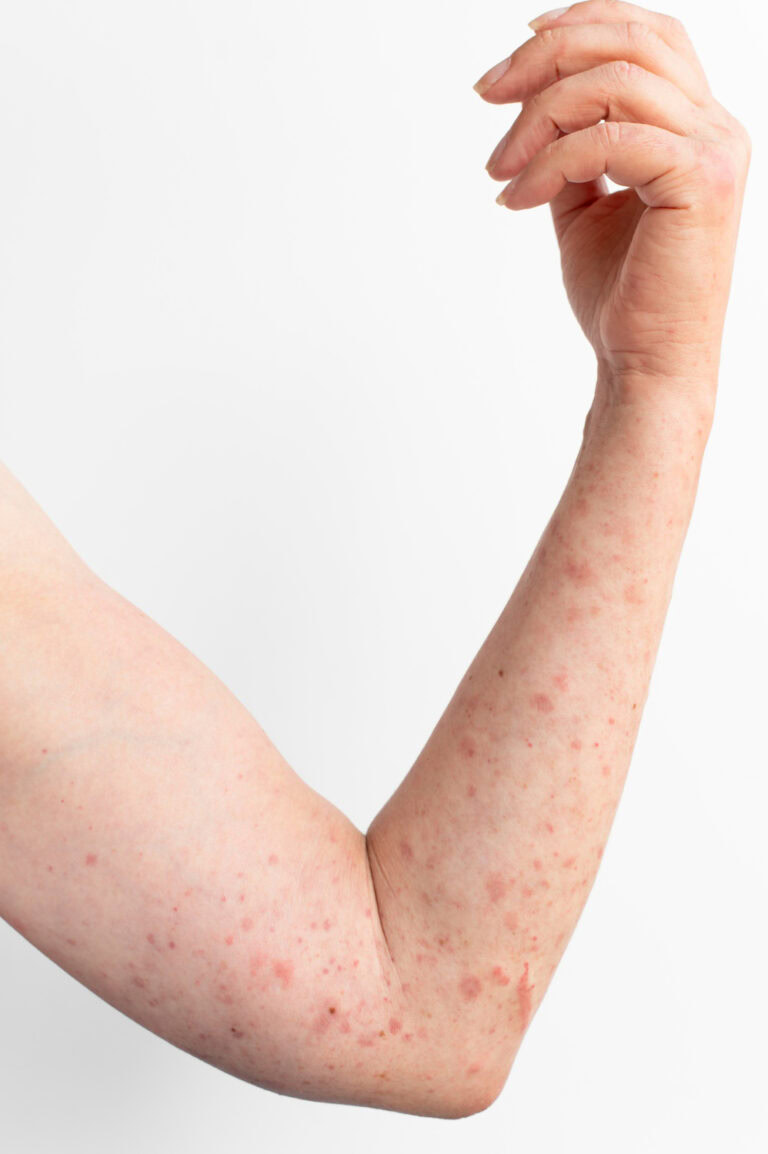Our Providers at High Valley Dermatology treat a variety of rashes. A “rash” is a general term for inflammation of the skin. There are many causes of a rash, including, but not limited to, allergic or irritant dermatitis, autoimmune disease, infections, medications, and rarely cancer of the skin.
- Allergic or irritant Dermatitis
- Eczema/Atopic Dermatitis
- Lupus
- Psoriasis
- Rosacea
- Skin Infections
- Bacterial (Staph, MRSA, Impetigo)
- Fungal (Tinea Versicolor, Tinea)
- Viral (Shingles, Molluscum, HPV (warts), Chicken Pox, Roseola, Measles)

Skin Rashes Causes
Allergic contact dermatitis is a skin condition that arises after contact with a chemical from which you have developed an allergy. Common allergens are found in:
- Makeup, soaps, detergents, colognes, various plants such as poison ivy, or other chemical that may be found at home or in the workplace. It is sometimes necessary to do allergy testing to determine which chemical may be causing the rash.
Irritant contact dermatitis is similar in appearance to allergic contact dermatitis, although the etiology is different.
- It is caused by contact to various chemicals that we use everyday for cosmetic or cleaning purposes, as well as from chemicals in the workplace. These chemicals cause the skin to become inflamed from direct irritation, but not due to an allergic reaction.
Autoimmune diseases of the skin such as Psoriasis and Lupus, are caused by an abnormal response by the immune system. These diseases are often exacerbated by sun exposure.
Infection of the skin can cause a rash as well. Bacteria, fungi, and viruses can all affect the skin.
- Bacterial diseases generally appear as pustules, tender crusted areas, or in ring like patches (Lyme disease).
- Fungal diseases such a ringworm or athletes foot are also very common.
- Viral diseases can present as rashes, either directly such as herpes, chicken pox, and shingles, or indirectly rash appearing during a viral illness, such as roseola.
Other Causes
Superficial skin cancers, such as basal cell or squamous cell carcinoma can present as scaly pink patches. Lymphoma of the skin can present as a scaly rash on the body. Many of these rashes look the same to the untrained eye, therefore it is important to consult a dermatologist when you have a skin condition that is not going away. Call High Valley Dermatology to schedule an appointment to discuss treatment options for your rash.
Give us a call Today
Call to schedule an appointment to discuss the best treatment option for you.




